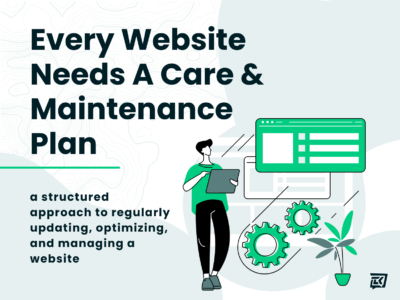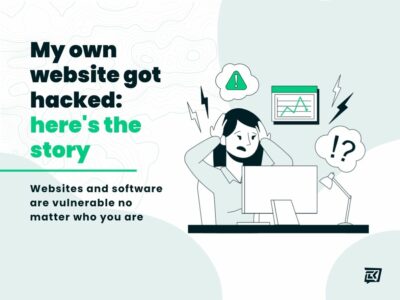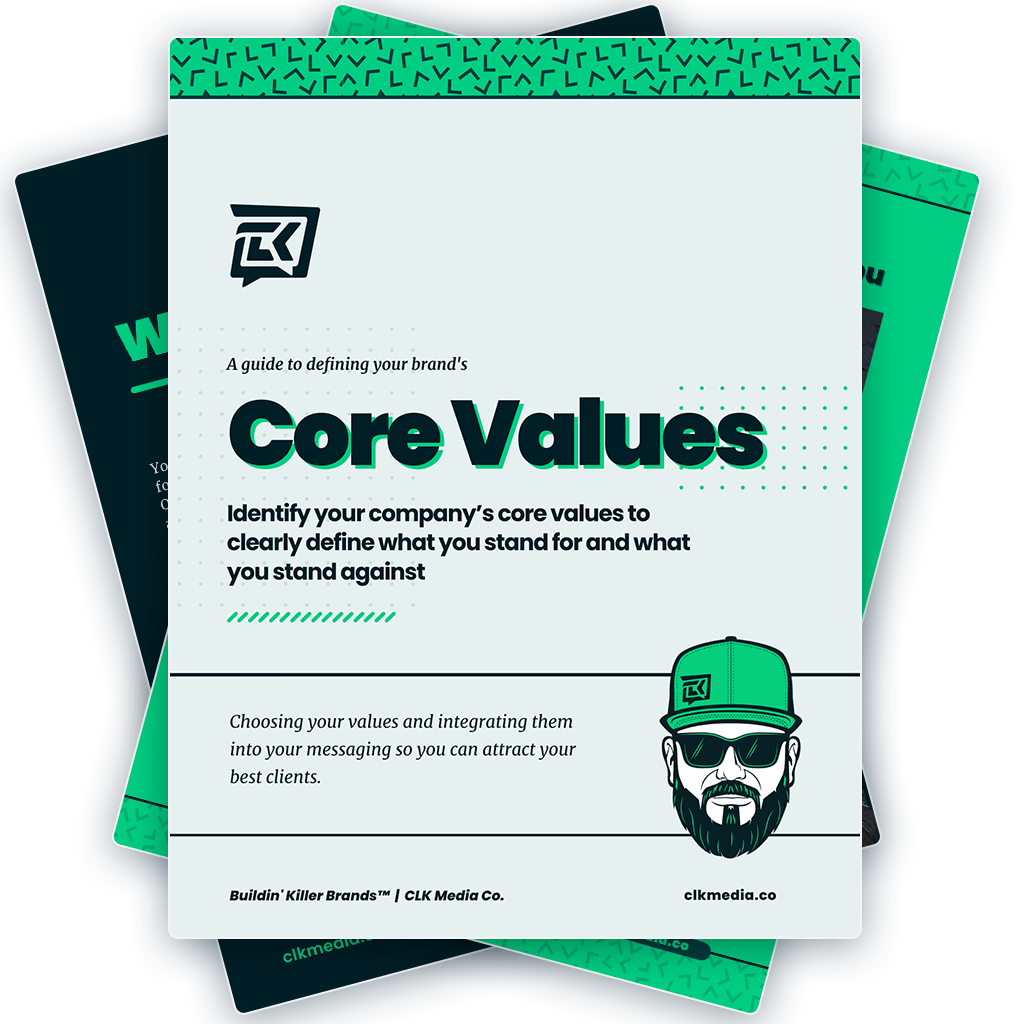Table of Contents[Hide][Show]
- 1. Make sure your website has a professional appearance
- 2. Strengthen your Calls To Action (CTA)
- 3. Know what your visitors want to do and make it easy
- 4. Make sure your content has purpose
- 5. Have unique and relevant titles for every page
- 6. Make it easy for customers to contact you
- 8. Optimize your website for quicker load times
- 9. Market and promote your website
- 10. Take advantage of social media
- Final Thoughts
Wondering why your website isn’t working?
If your website isn’t giving you the results you hoped for, you’ve probably got some good questions like:
- Why is my website not making sales?
- Why am I not getting many visitors?
- Why am I not getting email signups?
- Why am I not getting any phone calls from my site?
What you’re really asking is why isn’t my website converting.
Maybe your website isn’t getting much action right now, but I’ve got good news there is something you can do about it.
If you build it they still may not come
If your new website has been live for a month or two now and you haven’t gotten one sale you can attribute to the website, you’re probably starting to question things and wondering what’s going on.
What’s wrong? What happened?
What do you need to do to make your website work and start bringing you business?
You’ve invested in a new business website or spent countless hours learning to build it yourself and you just haven’t seen a return.
You set up your new website because your customers and potential prospects keep asking you for your website address. You’ve heard stories of other business owners receiving significant increases in business from their websites and of course you want in on that.
Unfortunately, your story hasn’t been the same as those other businesses whose websites have garnered them such success – on the contrary, your website has not generated one stinkin’ sale since you launched it!
What happened to build it and they will come?
1. Make sure your website has a professional appearance
Prepare yourself to take a cold hard look at your website – better yet – get a friend to look at it and tell them not to hold any punches. You need an unbiased and brutally honest review to know whether or not your website comes across as a professional production or an amateur attempt.
Are the graphics professional quality and crisp? Are your photos blurry, stretched or pixelated? Are your fonts and font colors consistent across the entire site? If your site displays any of these symptoms you need to take immediate action:
- Stretched, squeezed or pixellated photos
- graphics or sprites that are spinning, twirling, flashing or otherwise irritating
- inconsistent type for headlines and body text
- lack of contrast, your text is difficult to read against your background color or texture
- obnoxious or busy background graphics (i.e., repeating your bright orange and yellow logo or your cat fluffy)
Your website is your first handshake with potential customers and likely the first impression they will get, and thus immediately forming their opinion of your company. You should strive to portray a professional and appropriate image for your website to cater to your market and target audience.
2. Strengthen your Calls To Action (CTA)
A call to action is exactly what it sounds like…it is an element on your website (text, button, graphic, etc.) that urges a visitor to take an action. That action on a website is more times than not clicking on something to complete a task that is associated with a goal based on your website strategy. Ideally, you want your calls to action to be very strong and contrast heavily (color, size, spacing etc.) to the other content on your site so that it is obvious to visitors that they should click it.
Your strategy maybe getting users to make a donation, or buy a product or even to simply fill out a contact form. Whatever action you ultimately want your visitors to take needs to be obvious – people don’t like to think.
3. Know what your visitors want to do and make it easy
Building on your calls to action, now that we know what they are let’s make them easy to accomplish.
Do you want visitors to contact you? Fill out a form? Sign up for a newsletter? Make a purchase? Download something? Attend an event? Get clear on what your target actions are and make it very easy for people to complete them.
For instance, if you want your visitors to like your Facebook fan page, don’t hide a tiny icon in the corner of your page – make it big and obvious! Write some copy reveling in all the fun that is happening over on your Facebook page, as well as the benefits of joining your social circle.
Suggested Reading:
The same goes for Add to Cart links. Make them obvious. You can’t make a visitor click on it, but you can definitely make sure they don’t miss it!
4. Make sure your content has purpose
People visit websites for content period.
Whether it’s a how-to article, video or a product to make their life better they are searching for relevant content to the issue at hand.
Make sure you have a specific purpose for publishing the content you do and that its context is correct for your website’s target audience.
In other words, if you are a construction company you probably shouldn’t have a page talking about gardening because your target audience is looking for someone to build them a house not talk about tulips. You don’t want to waste your visitor’s time on frivolous content when you should be funneling them to what you’re selling.
5. Have unique and relevant titles for every page
Your titles are hugely important to your website’s usability and relevance for a few reasons: first, and most importantly, your page title should be a one-line descriptive summary of the pages content.
It should give your users, at a glance, what they are looking at so they can decide to spend their time reading further. Secondly, your page titles give search engines clues as to what each page of content is about and weighs heavily in ranking a page’s search relevance. This is part of the process of optimizing your website for search engines or Search Engine Optimization (SEO).
Make sure to give each page a title that describes what its content is about. In other words, don’t use your company name and slogan for every page title. If a given page talks about the widgets you are selling, your page title should include the widget’s name, and briefly describe the widget.
Easy peezy.
6. Make it easy for customers to contact you
This one should be a no-brainer but it’s worth mentioning. If you don’t have your contact information available people can’t contact you! Have a primary navigation link that says “contact us” and then put all the information your visitors will need to make contact in the method they are most comfortable with. Include a simple contact form, phone numbers, fax numbers, even your Skype and instant messenger usernames if you want.
Put your primary contact information in your footer or header so that it’s available on every page. If you don’t want people to call you make sure you provide easy to find and easy to use contact forms and email addresses.
7. Make it easier for people to place an order
Why is my online store not selling?
Give your users ample opportunity to make a purchase from you and make it easy. Don’t hide or camouflage your “buy it now” or “add to cart” buttons make them obvious. If you have an online store, make sure your shopping experience and checkout process is as easy as possible and ideally have a one-page checkout. The fewer steps there are between your customer’s cash and your products, the faster and more often you will see sales.
8. Optimize your website for quicker load times
There are plenty of things that will cause your site to load slowly and ultimately discourage visitors from sticking around to see what you sell. If that’s not bad enough, slow-loading sites will not rank as highly in searches as those with clean optimized code, images, and graphics that load quickly.
Large images and graphics are the primary culprits for a lot of websites. While professional, clear and focused photos and well-designed graphics help support and illustrate what you’re selling, make sure their file size is as small as possible while maintaining image quality.
9. Market and promote your website
“If you build it they will come” doesn’t work for websites and could be what led most of you to read this post to begin with.
Building a site and letting it sit there with no promotion is like setting up a lemonade stand in the shed behind your house – no one is gonna buy your lemonade if they can’t see your stand or don’t know you’re selling lemonade.
Taking advantage of pay-per-click advertising as well as other Search Engine Marketing strategies and techniques will help bring visibility to your site and improve your rankings in organic search traffic from search engines like Google, Yahoo! and Bing.
This is something that you can do yourself (with some time and research) or hire a professional (eh, hem…) to assist you.
10. Take advantage of social media
Social media is one of those things that a lot of business owners don’t understand and so, therefore, don’t use.
The internet has made it very easy for people to learn about companies – positive and negative – using social media allows you to participate in this conversation and tell them what you want them hear as well as respond to things you’d rather they didn’t. This transparency will help you build trust with your customers and well as attract new customers to your brand.
Your audience is using social media in their daily lives whether they use Twitter, LinkedIn, Facebook, YouTube, Flickr, or any combination of these along with hundreds of other social platforms available today. Meet your customers where they are, participate in the conversation – let them know who you are and how your company can improve their lives with your products or services.
And one final tip is to make sure you talk about your website and promote it. Put it on your business cards and brochures, put it in your email signature, on your postcards, Christmas cards, well you get the idea. Any time, any place you get the chance plug your site DO IT – don’t be shy. If you can drive interest and focus on your website as the hub of communication and marketing for your business you’ll be able to begin to harness all of its value potential.
Final Thoughts
These are just a few tips to help you get started, but there are any number of reasons your website may not be performing the way you think it should.
Remember, it’s never too late to get a website that works and finally have an online presence that will take your business to the next level. You can make your website a powerful tool for engaging with customers, building brand loyalty, and driving sales.
If your website needs some help, I’d love to chat.
Typical website conversion questions
Online sales usually come down to trust. There are a few possible reasons why your website isn’t taking off like you’d hoped. It could be that you’re not using the right keywords in your content, so people aren’t finding your products. Or it might be that there’s something wrong with the design of your site that visitors can’t get past. So take a look at your product pages and make sure everything looks good there.
And be sure to run through your checkout process to make sure that everything works as it should. It could be as simple as a hiccup in your shopping cart.
Ready to Get Started?
Starting at just $349, you can get a custom website and managed online presence for your business plus incredible support from a real web pro that has your back.
Get Started Today
 How to Budget for a Custom Website Design
How to Budget for a Custom Website Design




